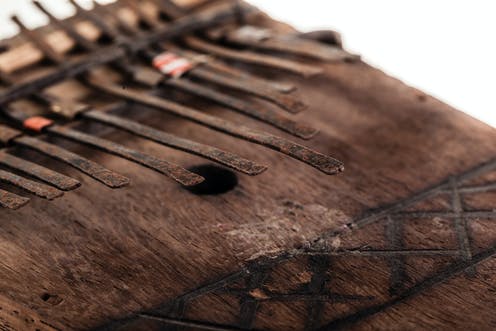
Africa’s Ancient Instruments
If you ever wondered how music was made around 10,000 years ago, now we have some answers thanks to archaeological research.
It’s important to have in mind that music or sounds for that matter, have changed in terms of its use, meaning that melodies and musical creations haven’t always been for entertainment or as something we have in our daily lives in order to help us keep going. Before CDs, mass media and musical institutions as they are known today, there were other uses for music, but just as it is today, music has always been a very human thing.
10,000 years ago in southern Africa, there were artefacts that can be easily considered some of the first musical instruments in the world, some resambling flutes, bells and even pianos.
There were two types of instruments found.
Aerophones
Aeorophones are musical instruments that produce their sound by air, this is, making the instrument vibrate making its way into sound.
Bone Tube
These instruments were made with bird bone and were very similar to flutes, but couldn’t be used to play several tones, just one.
Clay Whistle

A clay whistle is as simple as it gets when it comes to musical instruments, and it eventually evolved into clay ocarinas which had a bit more flexibility in terms of sounds.
Ivory Trumpets
An ivory trumpet was mostly made with elephant teeth, which then were carved, hollowed, perforated and polished.
The first of its kind was discovered more than 100 years ago:
This trumpet was collected in the Southern Sudan by John Petherick in 1858’ ; an account of his travels in that year is given in his 1861 volume, Egypt, The Sudan and Central Africa, when his expedition passed through Bongo, Shilluk, Nuer, Raik Dinka, Mundo and Zande territory. Petherick’s collection was shipped back to England in 1859. It was subsequently acquired by Pitt Rivers, perhaps via auction as Petherick is known to have sold some of his collection through Mr Bullock of High Holborn, London, on 27th June 1862
Idiophones
Idiophones also produce sound by vibrations like most instruments, however the vibrations isn’t produced by air, it is however produced by direct physical contact. These include concussion, friction, percussion, pluced, scraped, shkan stamping and shaked.
Thumb Piano

This is an instrument that works mostly like a piano and it’s considered a percussion instrument.
This instrument eventually became te Mbira which is made of a row of metal strips, used as key, attached to an open-ended wooden gourd or hollow resonator.
According to australian.museum:
Mbira was used in ceremonial functions such as weddings, funerals, and in honour of significant people, as well as for religious purposes, to call on spirits and seek their advice. When calling on spiritual ancestors, the tribe would perform a religious ceremony which involved continuous singing, dancing, and playing music until the spirits appeared. The ritual would temporarily stop in the presence of the spirit, and begin again once it departed. Thus it was necessary for the mbira to produce a sound that would ‘project into the heavens’ and attract the spirits to earth.
Musical Bells
These are just bells, as simple as that, but, the interesting part is to see that they were used at that time.
According to an article from theconversation.com:
Musical instruments are seldom found in the archaeological record and are not easily identifiable, so there is a lot of debate among researchers when it comes to identifying these instruments from the archaeological record. Some instruments may not have been musical instruments per se but rather sound-producing implements that were used to convey certain messages or used for ritual purposes.
